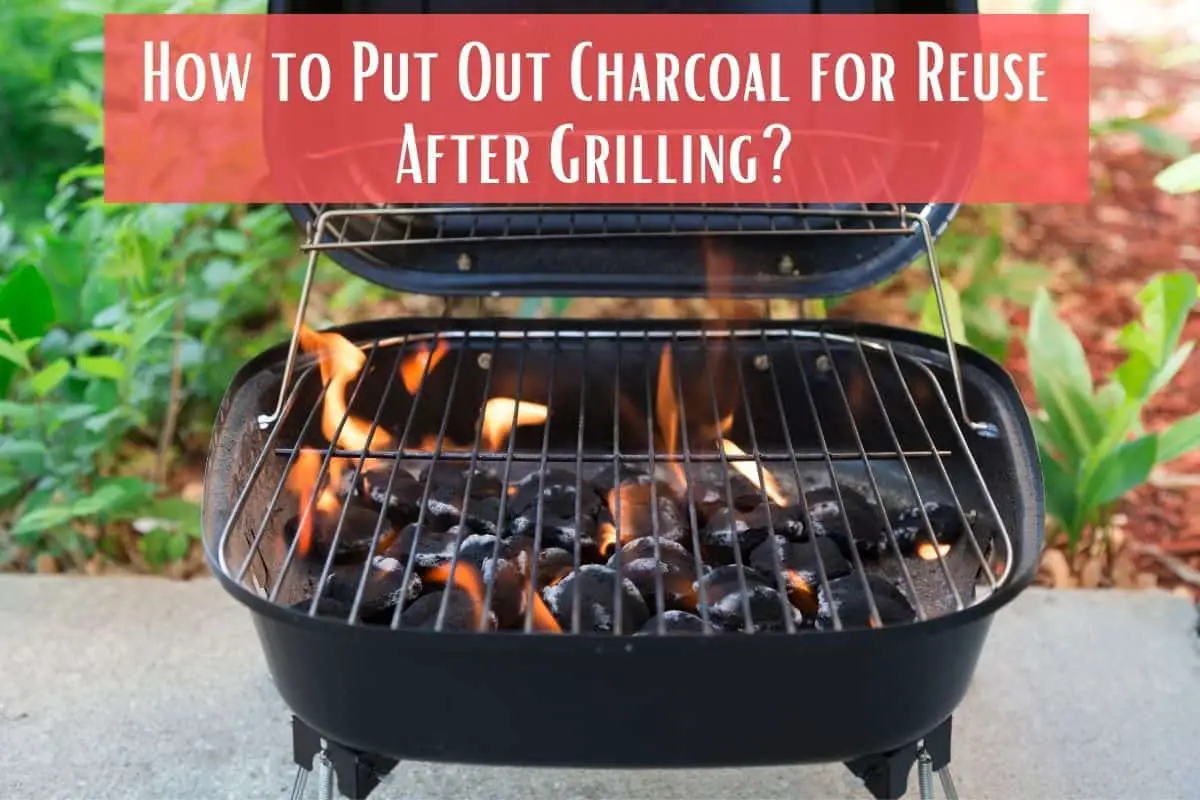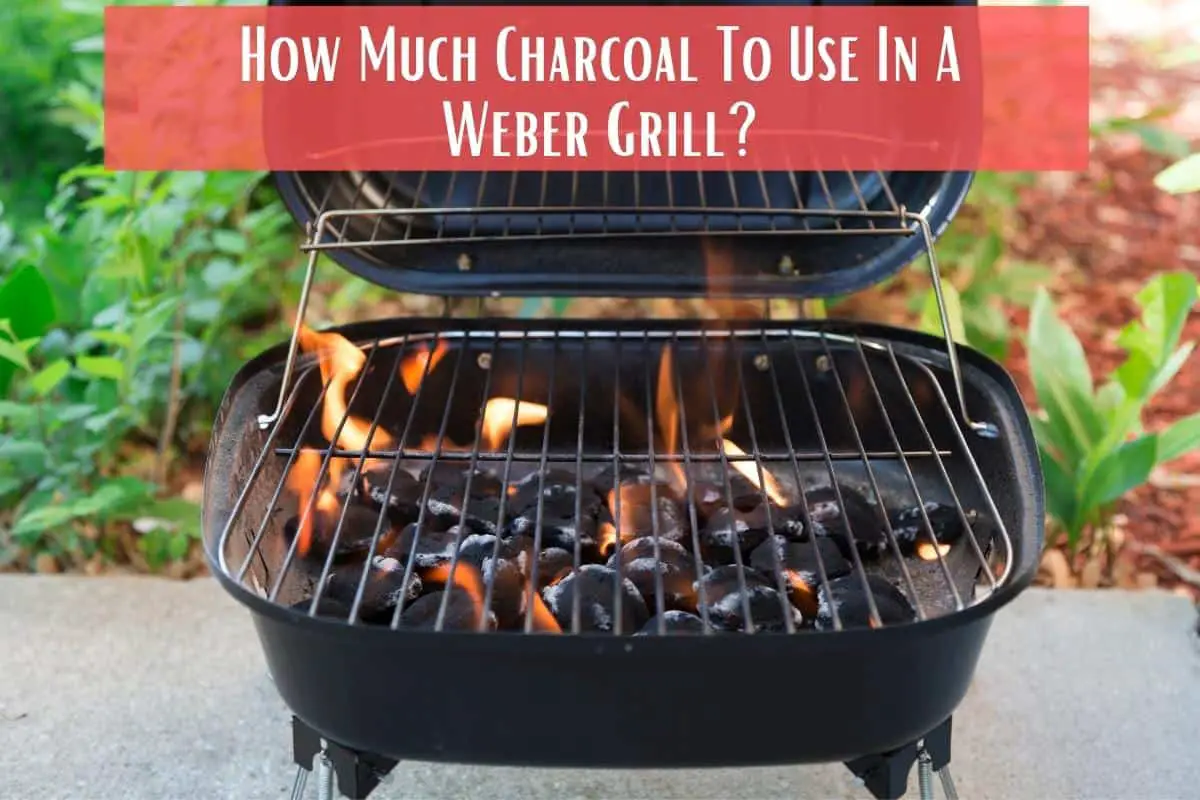When it comes to grilling, one of my favorite types of grills is the charcoal one. I mean, you can’t complain about the authentic flavor and richness your food absorbs when succumbing to the charcoal.
A pro tip right from the start – adding some wood chips to the grill makes it even better.
Then, there were still times when I was just about done barbecuing, but there were leftover charcoal lumps which then made me think. Do I put them out on the spot, or wait for them to cool down before I reuse them?

Believe me, I’ve done both these options, and since I’ve got the hang of it now, here are my best tips and tricks on how to put out charcoal for reuse.
Table of Contents
How to Put Out Charcoal After Grilling for Reuse?
You have two options to remove the leftover charcoal that didn’t quite get to flare up the first time. So, either you carefully put down the lid and shut down the vents so there’s no oxygen circulating inside – or you just pull the briquettes or charcoal lumps one at a time, and then dump them in the water.
With the first option, you’ll have to wait approximately 6 to 8 hours and maybe even longer, which in all honesty, is not very time-efficient. As for the second option, well,
let’s just say, you might not get the chance to even reuse the charcoal if you don’t do the steps right.
But, let’s go over each option in more detail.
Option 1: Closing the Lid
Yeah, it may be the easiest way when reusing the charcoal, to first suffocate it by closing the lid, and then shut down the vents for no oxygen. It’s a very straightforward practice and practically gives good results.
But – there’s just one catch.
Namely, you have to wait an enormous time for the charcoal to cool off. Likewise, since the briquettes, or charcoal lumps, will burn a little bit even when with the lid closed, they will lose the potential they have to light up another barbecuing session – should you decide to use the charcoal for another batch, that is.
Option 2: Submerging the Charcoal in a Water Bucket
Now, if you’re not at all the type of barbecuer who wants to wait for the briquettes or charcoal lumps to cool down first, dumping either in a water bucket will be the best option to go for. However, it’s not that good of an idea to submerge the charcoal entirely in the water and leave it be for a while before it properly cools off.
This is because, if you are going to use low-quality charcoal, it may crumble to pieces, which will then make the charcoal unusable. If you have high-quality lumps of charcoal, however, it’s perfectly safe to submerge them in water. You’ll need a metal bucket to do this, alongside a pair of grill thongs, and fireproof gloves, so you can remove the charcoal safely and place it inside the water bucket.
Just to be on the safe side and have a good chance of reusing the charcoal, make sure you first remove it in an empty metal bucket, and sprinkle it with a little bit of water, just enough to put them out and cool them down at the same time. Once done, bake the charcoal a little bit in the sun before storing it for reuse.
What are Some Ideas for Reusing Charcoal?
There are a number of reasons why you need to stop throwing away charcoal and start reusing it. Plus, there are many options that you can choose from in reusing charcoal.
Since we’ve cleared the “how to put out charcoal for reuse?” question, let’s see some ideas for reusing charcoal.
1. Reusing Charcoal for Another Grilling Session
The first and foremost idea here is to reuse your intact charcoal for the next grilling session. This will help the environment – not to mention your pocket – yet it won’t make you a cheapskate. Think of it as intelligent investing instead. You’ll most likely turn the charcoal grill again for some scrumptious barbecued meat, fish, or veggies, so why not simplify the process when you can?
2. Reusing Charcoal as a Fertilizer
Yes, you may use charcoal as a fertilizer if you have a garden, be it your front yard, back yard, or either. If you have some plants in your home, you can break out the charcoal into itsy-bitsy chunks and toss them as fertilizer in the plants’ soil. Charcoal delivers good nutrients to the soil and can even absorb pollutants, which will not go unnoticed by the plants. In fact, they’ll be more than glad for the “food” you give them.
3. Reusing Charcoal for Elimination of Rust
Not many people know this but charcoal is a natural absorbent – and can soak up water like crazy. The best way you can use charcoal for its absorbent properties is when you want to eliminate rust since rust occurs when there is both oxidation and moisture. Here, you need to simply put the charcoal in a thin bag and place it against a metal surface, or wherever you are trying to avoid rust.
4. Reusing Charcoal for Eliminating Bad Smells at Home
Because it’s a natural absorbent, charcoal can be used to eliminate the bad smells from every part of your home. As with rust elimination, you can also put small pieces or chunks of the charcoal in a thin bag, and then hang the bag where you need it. The bathroom or your clothes drawer would be a perfect fit for this.
5. Reusing Charcoal for Cleaning & Glossing
Some people do know that you can gloss something up or properly clean it with charcoal. And yes, you can do that with previously used charcoal as well. The best way to reuse charcoal for cleaning is to use it as a water purifier. Charcoal does purify the water efficiently, and what’s more, some people actually use it to brush their teeth.
It has been known for quite some time that charcoal is a good teeth cleanser, and I know it almost sounds disgusting, but it’s practically good for the health of your teeth and gums. Also, if you’re having tummy troubles, charcoal is widely used in healing an upset stomach and makes a great remedy for controlling diarrhea.
Can You Reuse Charcoal after It Gets Wet?
Charcoal lumps are a tad more resilient to water, meaning, you can reuse them even after they are soaking wet. Naturally, you have to dry them first before you use them.
On the other hand, briquettes aren’t on the resilient side. Since they’re quite cheaper than charcoal, introducing them to water will have them crumble – even when fully dry.
So, if you’re planning on sprinkling or submerging charcoal in water to reuse it – see that it’s charcoal lumps to get the best possible outcome, and not briquettes.



